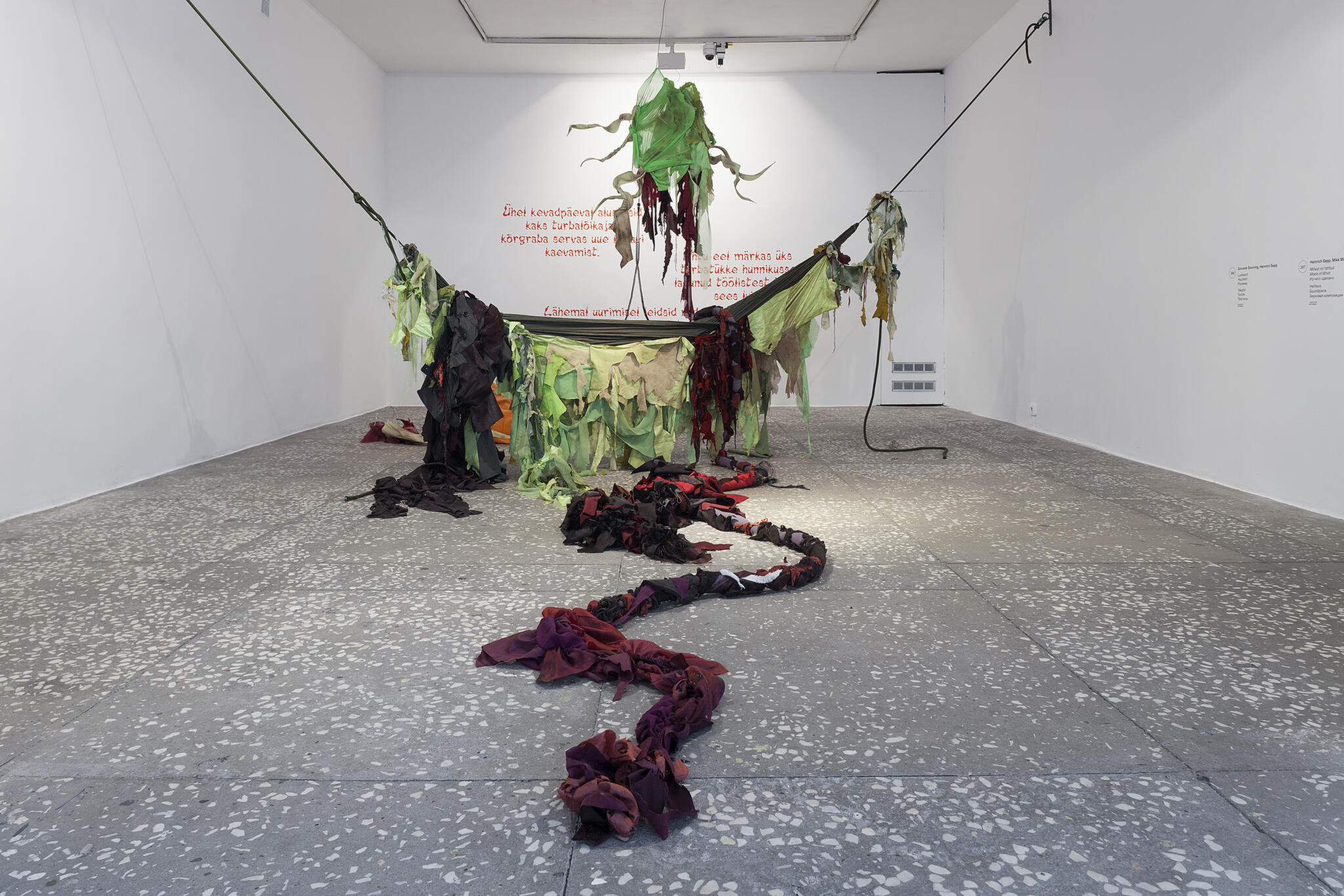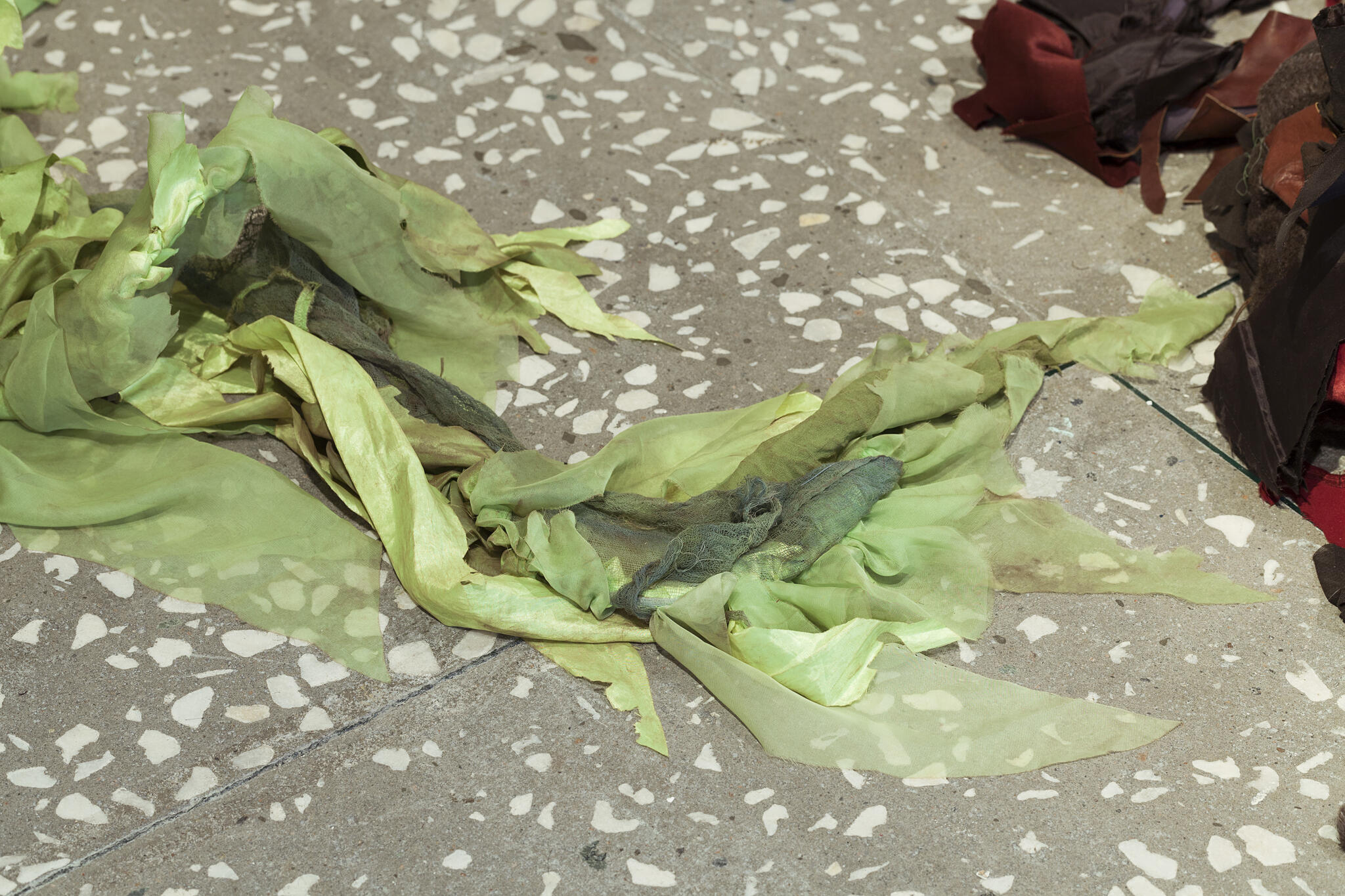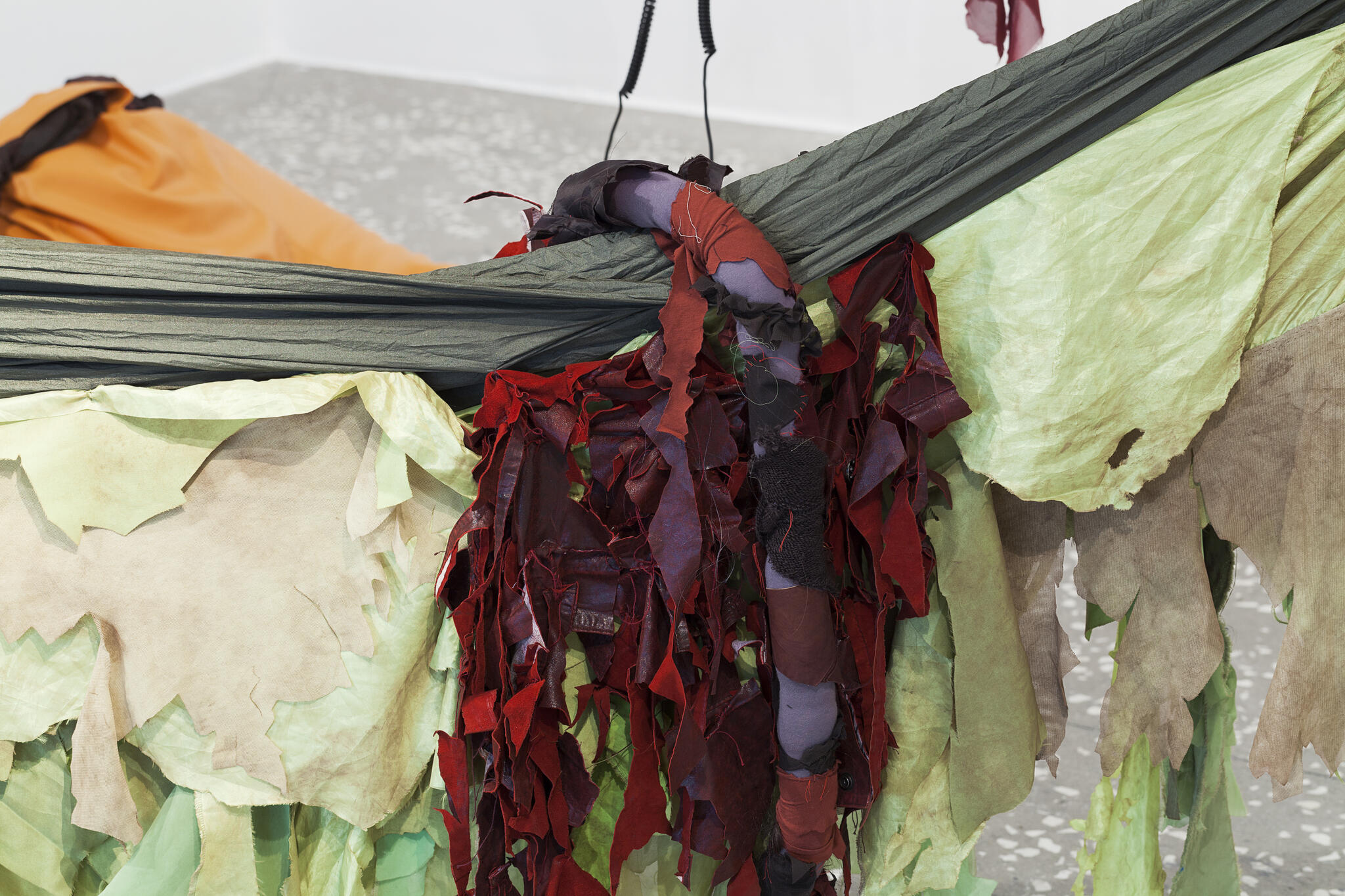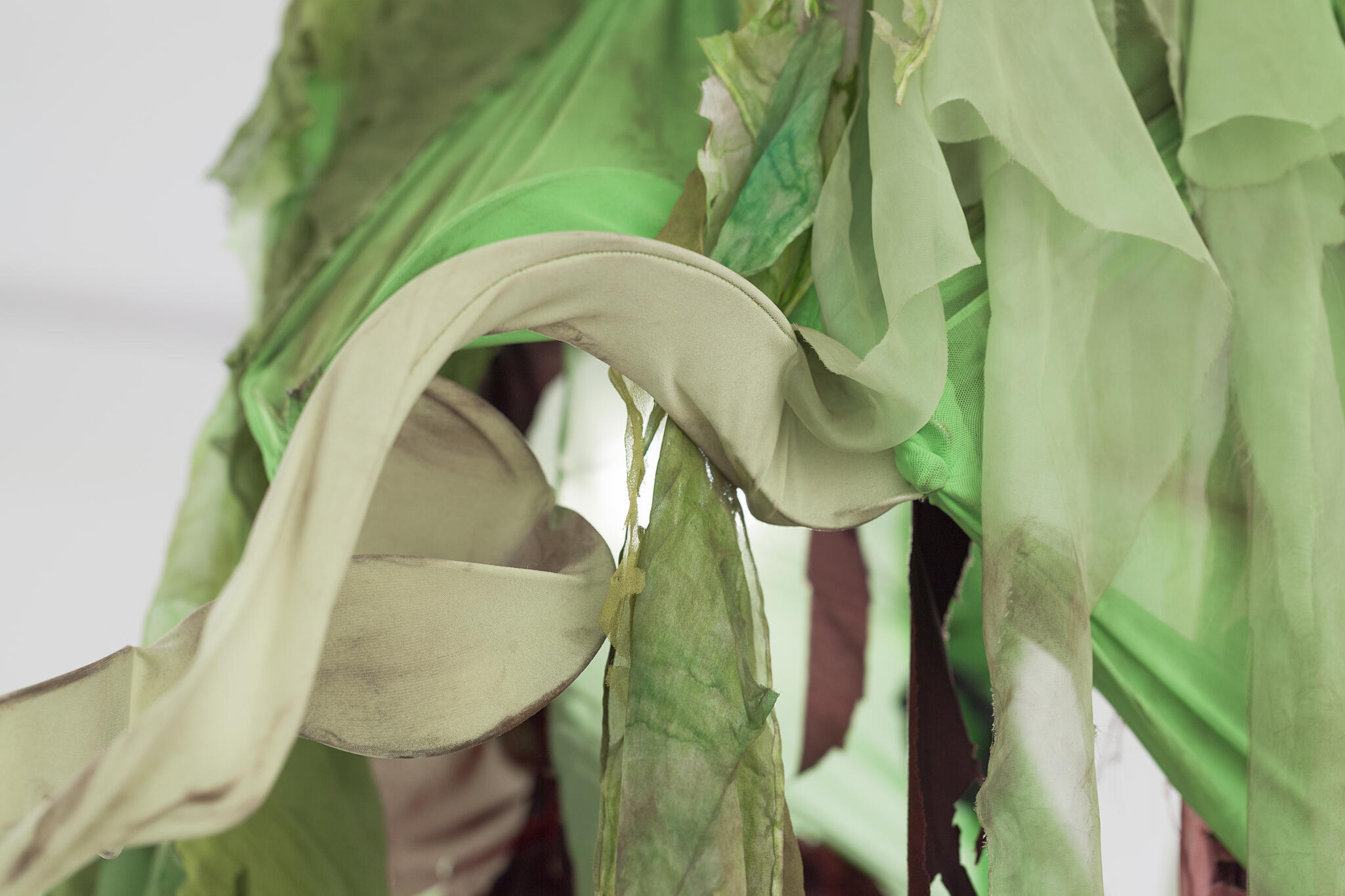2024
Art festival "Ma ei saa aru" in Telliskivi Loomelinnak curated by Marion Laev & Bianka Soe
This installation distorts the perception of the traditional family model and gender roles by manipulating the exhibition space with printed fabric. Distorted-looking family photos blend into the interior, blurring the boundaries between the mundane home environment and fabricated reality. Social connection and a sense of belonging are considered one of the basic human needs. Perceiving a strong bond with a physical, symbolic, or imagined collective is vital for both individuals and communities. The family represents a sort of utopia of communal belonging, participation in which is not dependent on individual actions or inactions. The installation provokes questions about norms, identity, individuality, and acceptance, creating a dynamic and contradictory space that encourages viewers to reflect on expanding the notion of a family.
Kalmuneiu
2023
"Naturally it is not" curated by Keiu Krikmann & Darja Popolitova at Estonian Applied Art and Design Museum
The work is inspired by the legend of the Kalmuneiu, the story of a girl living in the underworld who was betrayed by her groom when he married another woman. In Sorcerer's interpretation, the Kalmuneiu has become a chimaera, incorporating both a mythological origin and the modern world of materials transformed by overconsumption and human activity. She is monstrous in her mutant state, but at the same time reflects the world of our own creation.
Lustwort
Sorcerer, Heinrich Sepp
2022
"Her Legs, an Egg, Her Toil(e) and Blankets" curated by Keiu Krikmann at Tallinn City Gallery
Heinrich Sepp’s two-part artwork is inspired by the discovery of a bog body, also known as the Rabivere Woman in 1936 in Rabivere, Estonia. The bog body was discovered by peat diggers while widening a trench. The body, believed to be around 300–350 years old, as well as her clothing were well preserved. The look and the wear of the garments suggests the woman did physical labour, meaning she had been of a lower social class.
In Sepp’s work, the bog body comes back to life as a queer genderless time traveller to tell their story. The first part of the work, the costume installation (in collaboration with Sorcerer Sourcing) entitled Lustwart, evokes the natural and material environment of the bog – on the one hand a very particular ecosystem, on the other, historically a significant local economic resource. Since the 18th century, peat was used as a source of heating in manors and distilleries and by the 1960s Estonia saw a true boom of peat briquette production.
In Sepp’s vision, the bog body emerges from the bog and shapeshifts into performer Briquette Bardot, taking the audience on a brief tour through the distorted history of pop, only to vanish again soon.
















